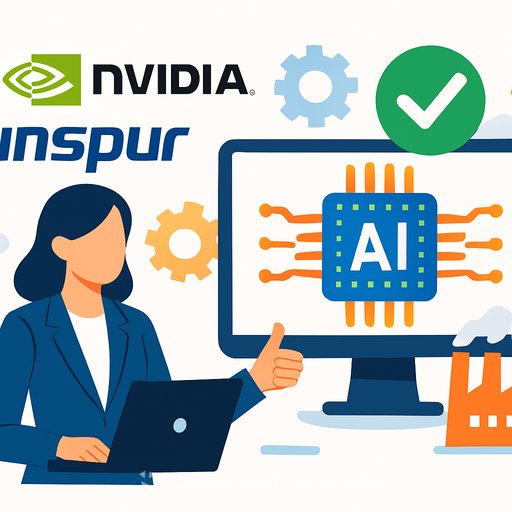InnoTek Approved as Recommended Vendor for NVIDIA and Inspur's IEIT, Expanding Precision Manufacturing for AI GPU Projects
InnoTek has been approved as a recommended vendor supporting AI GPU projects with NVIDIA and Inspur's IEIT. For product development teams building GPU-dense systems, this signals a stronger supply base for precision parts and assemblies that meet tight tolerances and high thermal demands.
The headline: more qualified capacity for AI server and component builds. Less risk in scaling from prototype to volume.
What this means for product development
- Supply assurance: A pre-vetted vendor reduces qualification cycles and de-risks critical mechanical and thermal components tied to GPU platforms.
- Faster NPI: Shorter DFM loops and clearer spec handoffs accelerate EVT/DVT/PVT while keeping tolerances predictable.
- Consistent quality: Process control and repeatability matter for GPU trays, chassis, heatsinks, and liquid-cooling fixtures under high thermal load.
- Tighter integration: Better fit with NVIDIA- and IEIT-based reference designs improves interoperability across racks, sleds, and interconnects.
Precision manufacturing focus areas for AI GPU builds
- Thermal hardware: heatsinks, cold plates, vapor chambers, brackets, backplates, and pressure frames with consistent flatness and contact pressure.
- Chassis and trays: sheet metal and machined parts with tight GD&T for card alignment, airflow, and serviceability.
- EMI/RFI control: shields, gaskets, and enclosure features that maintain signal integrity in high-density layouts.
- Interconnect fit: precise mounting for NVLink, PCIe, and high-speed connectors to avoid strain and misalignment.
- Cooling infrastructure: manifolds, quick connects, and structural supports that maintain flow rates and leak integrity.
Practical steps to capture the upside
- Lock the interface stack early: reference design revisions, connector keep-outs, thermal targets, and fastener strategies.
- DFM in the loop: bring the vendor into EVT with datum schemes, tolerances, and material calls that reflect actual process capability.
- Qual like you ship: run FAI on production-intent tooling, validate flatness/pressure maps, and confirm assembly torque windows.
- Design for service: focus on access, repeatable reassembly, and wear points on trays, latches, and liquid couplings.
- Plan capacity ramps: align forecast, tooling duplication, and lead-time buffers before committing to multi-rack deployments.
Impact on timelines and cost
- Shorter cycle time: pre-qualified manufacturing routes reduce rework during validation.
- Lower scrap risk: tighter tolerances and stable processes cut variation on critical thermal interfaces.
- Smoother scale-up: standardized parts and fixtures make it easier to move from pilot to volume.
What to watch next
- Platform alignment: updates to NVIDIA and IEIT reference designs that impact dimensions, airflow, or cooling methods.
- Regionalization: options for multi-geo production to meet lead-time, tariff, or compliance requirements.
- Sustainability: materials, coatings, and processes that meet corporate and regulatory targets without compromising thermal performance.
If your team builds on NVIDIA data center platforms, keep an eye on hardware and reference updates here: NVIDIA Data Center.
Get Daily AI News
Your membership also unlocks:
700+ AI Courses
700+ Certifications
Personalized AI Learning Plan
6500+ AI Tools (no Ads)
Daily AI News by job industry (no Ads)






